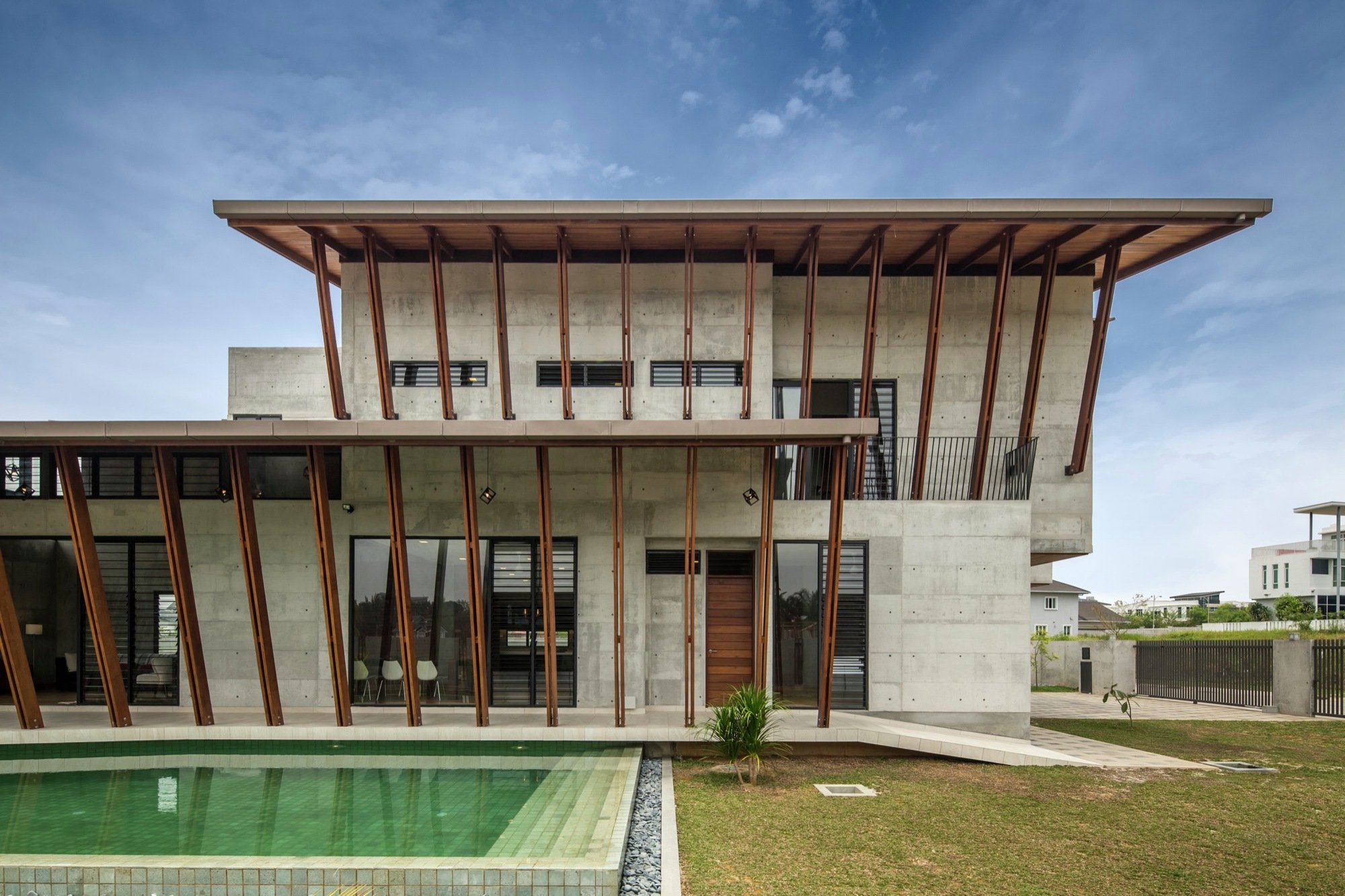#11563. Concrete and Wood Facade with Dynamic Angled Supports

This modern residential house is an excellent example of combining the brutal aesthetics of concrete with the warmth of wooden elements. The facade is built on the contrast between massive concrete planes and elegant wooden supports that create a dynamic rhythm around the entire perimeter of the structure. These angled wooden columns not only serve a decorative function but also act as a structural element supporting the protruding parts of the roof, creating a floating effect.
Particularly noteworthy is the work with the canopy — the wide roof overhang protects from direct sunlight, while the inclined supports create a sense of lightness. The facade has a clear horizontal division into two levels, where the upper floor features more enclosed concrete surfaces, while the lower level opens up with large glazed areas.
The architect skillfully used the principle of material contrast: the cold gray concrete surface is softened by warm brown tones of wood. Minimalist window openings with horizontal louvers provide protection from the sun and add rhythmic quality to the composition. The surrounding landscape with a swimming pool complements the architecture, connecting the house with its natural environment.
To adapt similar techniques in private home construction, one could: combine contrasting materials (such as concrete and wood), create an expressive rhythm using inclined supports, design wide roof overhangs for protection against precipitation and sun, and integrate architecture with landscape design. Even on a smaller scale, expressive angled elements and playing with textures can make a facade memorable.